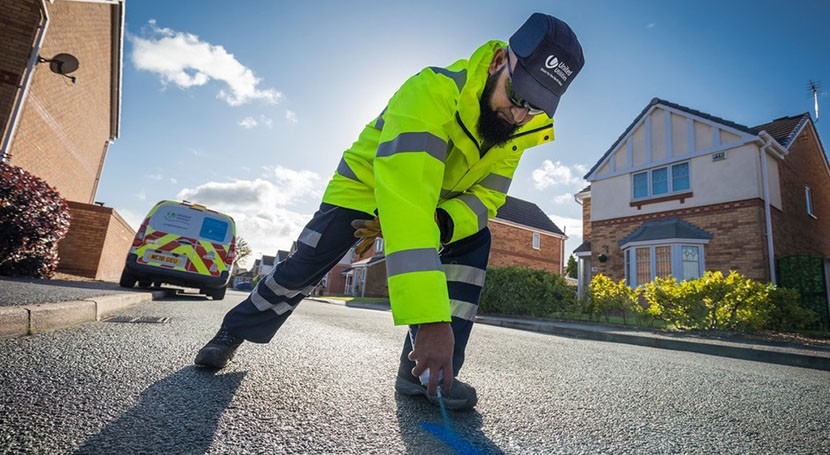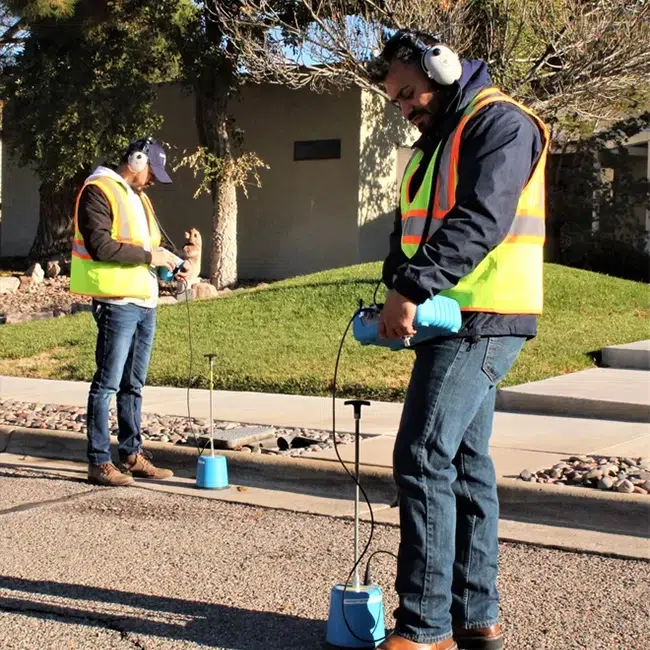Comprehensive Overview to Water Leak Detection for Property Owners and Services
Innovative Solutions for Early Detection of Water Leakages in Structures and Infrastructure
From advanced leakage discovery innovations to the implementation of IoT sensors for real-time monitoring, the landscape of leak prevention is evolving swiftly. Automated water circulation analysis systems are reshaping how leakages are recognized and attended to, leading the method for a positive approach to water leakage detection.
Advanced Leak Detection Technologies
Advanced leakage detection technologies, geared up with cutting-edge sensing units and algorithms, play an important function in swiftly identifying and identifying water leakages in numerous settings. Electromagnetic sensing units can recognize adjustments in electromagnetic areas caused by water, offering yet one more layer of leakage detection ability.

IoT Sensors for Real-Time Surveillance
In the world of contemporary water leak detection, the combination of IoT sensing units for real-time surveillance represents a critical innovation in boosting positive leak detection capabilities. These sensors offer constant monitoring of water supply, offering real-time information on water circulation rates, stress variations, and temperature adjustments. By leveraging IoT innovation, these sensing units can discover also the smallest abnormalities in water usage patterns, allowing very early recognition of potential leakages before they rise into major problems.
IoT sensing units transfer data to a central system, where sophisticated algorithms evaluate the info and create signals or notifications when abnormalities are discovered. This real-time surveillance ability allows property proprietors or center managers to promptly address leaks, minimizing water damage, minimizing repair work costs, and saving water sources.
In addition, IoT sensors can be incorporated with building management systems, enabling automatic responses to found leakages, such as turning off water shutoffs or activating pumps to minimize the effect of leakages. Generally, the application of IoT sensors for real-time surveillance considerably boosts the performance and effectiveness of water leakage detection in structures and facilities.
Equipment Discovering Algorithms for Leakage Prediction

One key advantage of utilizing equipment discovering for leakage forecast is its ability to continuously find out and enhance its accuracy with time. As more information is gathered and fed right into the formula, it can refine its forecasts and adapt to transforming conditions, ultimately boosting the dependability of leak discovery systems.
Furthermore, artificial intelligence algorithms can aid in determining refined indications of leakages that may go undetected by traditional monitoring techniques. water leak detection. By examining complex information helpful resources collections in real-time, these algorithms can provide early cautions and notifies, permitting for timely treatment and preventive upkeep to alleviate potential water damage and linked costs
Using Thermal Imaging for Leakage Detection
Thermal imaging modern technology offers a promising method for discovering water leakages in numerous systems and frameworks. By making use of infrared radiation and temperature level differences, thermal imaging cameras can identify hidden leakages that are not conveniently noticeable to the nude eye.
Among the crucial benefits of thermal imaging for leak detection is its non-intrusive nature. Unlike conventional techniques that may need burglarizing walls or floors to locate leaks, thermal imaging permits non-destructive testing. This not only saves time and reduces costs but additionally decreases disturbance to the structure or facilities being examined. Furthermore, thermal imaging can swiftly scan large locations, supplying a detailed introduction of prospective leak sources in a timely fashion. Generally, using thermal imaging technology enhances the performance and accuracy of water leak detection, making it a valuable device for preserving the integrity of structures and facilities.
Automated Water Flow Evaluation Solutions
How can automatic water circulation analysis systems revolutionize the detection and monitoring of leaks in numerous systems and facilities? Automated water circulation analysis systems provide an aggressive method to leak detection by her comment is here constantly checking water flow prices and patterns. By establishing baseline information, these systems can promptly identify deviations that might show a leakage, enabling timely treatment to avoid considerable damage.
These systems utilize advanced formulas to analyze real-time data and supply instant alerts when anomalies are spotted, enabling quick activity to be taken. Additionally, automatic water circulation analysis systems can be incorporated with building administration systems or IoT systems, enhancing overall effectiveness and making it possible for remote monitoring capabilities.
In addition, the information accumulated by these systems can be used for predictive upkeep objectives, aiding to recognize possible weak factors in the framework prior to leakages occur. Overall, the implementation of computerized water circulation evaluation systems can substantially enhance leak detection and monitoring techniques, inevitably causing set you back savings, reduced water wastage, and raised sustainability in structures and facilities.

Conclusion
Finally, the combination of sophisticated leakage discovery modern technologies, IoT sensing units, maker learning algorithms, thermal imaging, and automated water flow analysis systems provides innovative services for early detection of water leaks in buildings and infrastructure. These technologies enable real-time monitoring, prediction of leakages, and reliable discovery approaches to stop check it out water damages and wastefulness. Implementing these solutions can aid in keeping the honesty and sustainability of water supply in different settings.